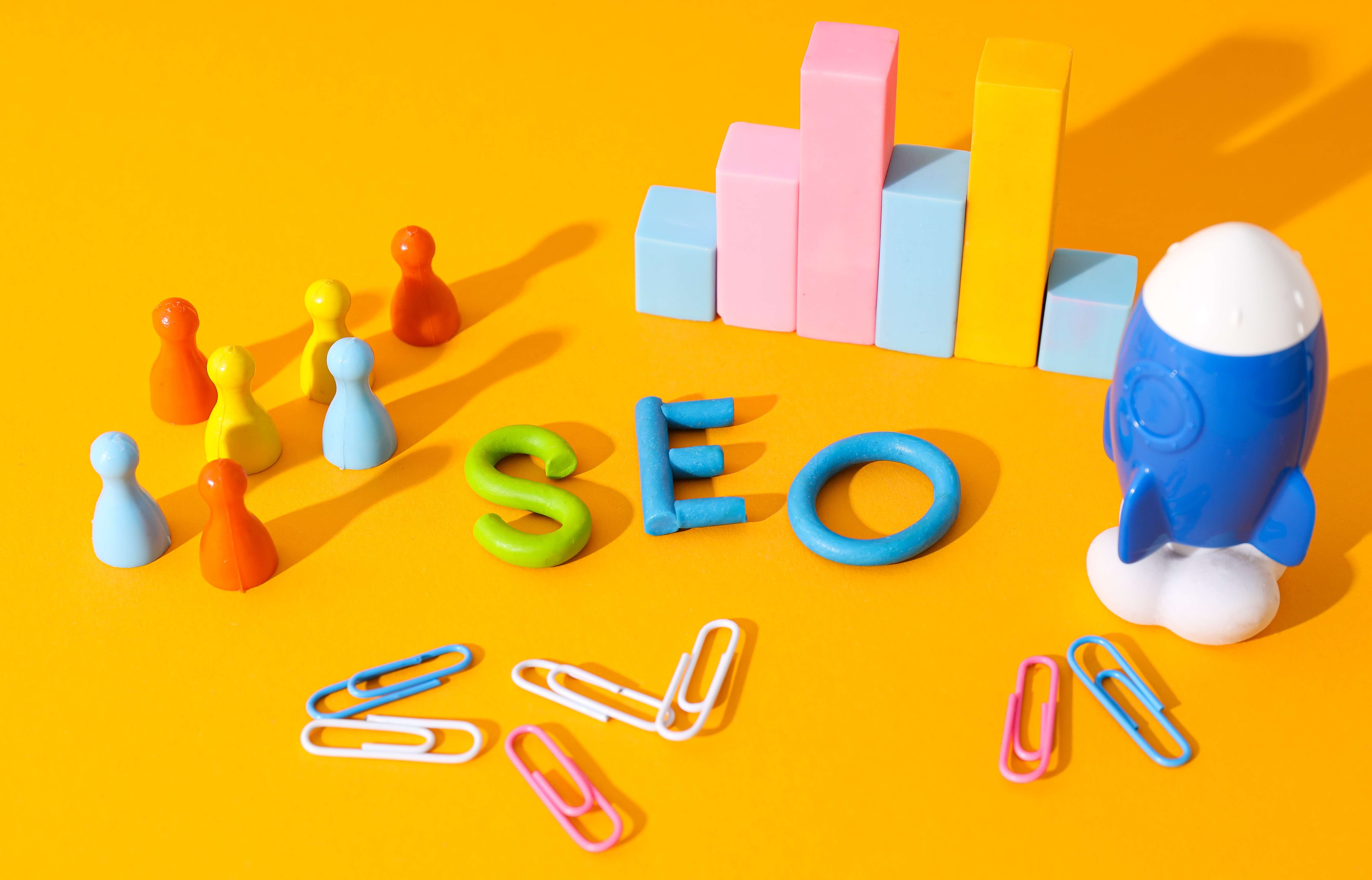
What is Google’s Core Web Vitals Update?
Posted March 22, 2021 by Lee
The complex algorithms that determine Google search rankings measure over 200 separate factors to work out which pages are most relevant to the user’s search terms. Much of the information that Google takes into account has to do with SEO (keywords, links etc.) but did you know that the user experience (UX) on your website also has a big role to play?
Google takes a number of UX related metrics into account and after a new update in May 2021, they will start scanning Core Web Vitals when determining search rankings. Understanding what Core Web Vitals are, how they affect your site, and how you can improve them will be key to improving your search engine rankings in the future.
Core Web Vitals include things like page load times, visual stability scores, and any other factors that impact how good the experience is for the end user. This article will give you more information about what Core Web Vitals are, how the new update could affect your site, and how you can prepare for it.
What Are Core Web Vitals and Why Are They Important?
Usually, when you are trying to optimise your page for search, you are focused on keywords rich content, quality backlinks, and metadata. Google uses those things to work out how relevant your page is to the search term, so they can present users with the content that they are looking for. But users are not just interested in the relevance of the content, they are also concerned with the usability of the website. Nobody wants to use a slow website that is filled with annoying pop-ups, even if there is some useful information in there somewhere. Google’s Core Web Vitals algorithm update will rank websites based on usability as well as content, creating the best possible experience for their users.
The metrics that combine to create a good UX are known as a page experience signal, and they include things like how mobile-friendly a site is, the number of pop-ups, HTTPS use, and the presence of malware on the site. Google launched the Web Vitals initiative to work out which metrics are the most important and the three that they decided were most important became the Core Web Vitals. So, what are they?
Largest Contentful Paint (LCP)
Website loading times are one of the most important factors when it comes to UX. If your page load time increases from 1 second to 3 seconds, you will see an average bounce rate increase of 32%. If it takes 6 seconds to load, that increase goes up to 106%, so it’s clear that people will not tolerate slow load times, which is why Google made it one of their Core Web Vitals.
When measuring load times, we often look at the amount of time it takes to load the full page, but that is an oversimplified way of looking at things. Web pages don’t load every element simultaneously and large elements take longer than small ones. The majority of the page might appear right away but images or video players will take another second. It’s more accurate to measure loading times using first contentful paint (FCP) and last contentful paint (LCP) metrics to take this into account.
FCP measures how long it takes for the first element on the web page to load while LCP measures how long it takes until the last element is loaded. Essentially, LCP measures the time it takes for the entire page to load.
It is important to keep LCP under a certain threshold to manage the bounce rate but FCP should be taken into account too.
First Input Delay (FIP)
First input delay (FIP) measures how long it takes before a website is interactive. In this instance, the word interactive refers to any action that involves some kind of feedback from the site (clicking a button, scrolling, rolling over a menu etc). It’s incredibly frustrating for the user if the visual content loads but they still cannot use the site, so managing FIP properly is key to UX.
In most cases, if a page has a low FIP time, it’s because scripts in the background take a long while to load, even though the rest of the page has been rendered. It’s important to fix this and reduce the FIP times to below 100 milliseconds, which Google considers good.
Cumulative Layout Shift (CLS)
Layout shift is something that we have all experienced, even if we don’t know the technical term for it. When you try to click on something and the whole page shifts, making you click on the wrong thing, that’s layout shift, and it’s so frustrating for the user.
CLS measures how long it takes for the entire page to stop moving around so the user will not experience layout shift when they attempt to click on something. The closer you can get your CLS value to zero, the better.
CLS is particularly important on mobile because the pages are likely to shift around a lot more. On a small screen, it’s much easier for the user to lose their place on the page due to layout shift, so managing CLS is vital if you want a good UX. Even if your CLS score is good on desktop, that doesn’t necessarily mean that it will be low enough for good performance on mobile, so make sure that you test your site thoroughly on all platforms.
How Will The Core Web Vitals Algorithm Update Affect Your Site?
This is the big question on everybody’s minds. Whenever Google releases a new update, it’s important to understand how it is likely to affect your website. In this instance, it’s fairly simple; if you can keep your Core Web Vitals scores as low as possible, you will provide a better UX and there you may get a boost in search rankings at the same time.
If you want that boost, you need to make sure that each core metric falls within the recommended range, as set out by Google. These ranges are as follows:
| Good | Needs Improvement | Poor | |
| LCP | Under 2.5 seconds | 2.5 seconds-4 seconds | Over 4 seconds |
| FID | Under 100 milliseconds | 100-300 milliseconds | Over 300 milliseconds |
| CLS | Less than 0.1 seconds | 0.1-0.25 seconds | Over 2.5 seconds |
You can find more information about how the ratings for each of the Core Web Vitals are determined on the Google support pages.
If you can get all of your vitals into the ‘good’ range, your site will get a boost in the search rankings. However, there are a few details about the update and its effect that are still not clear yet. For example, it’s not exactly clear what will happen if some metrics are in the ‘good’ range and others are not. There has also been no indication as to whether sites that meet the ‘good’ criteria for all metrics will be marked with a badge of any kind, indicating a good UX to the users.
Regardless of these details, it is clear that improving your Core Web Vitals will boost search rankings and increase your click-through-rate. A better UX will also have a positive impact on your bounce rate too.
The Core Web Vitals algorithm update doesn’t launch until May 2021, so you still have time to make some changes to your site.
Measuring Core Web Vitals
Before you can improve your Core Web Vitals and see an improvement in your overall SEO, you need to measure them to get an idea of where you currently stand.
Google Search Console is one of the best SEO tools you can use and it is great for measuring your Core Web Vitals. It gives you all sorts of information that helps you optimise your site for SEO and improve the UX.
On your dashboard, you can go to ‘enhancements’ and then ‘Core Web Vitals’ to see how your site is currently performing. You will be presented with graphs that show how your Core Web Vitals have changed over time, which is useful because it allows you to see the impact of any updates you make. You can also see results for the desktop and mobile versions on the same page and get a score for your website as a whole instead of individual pages.
You can also use PageSpeed Insights from Google to look at data about your Core Web Vitals. Using both of these tools should give you a clear idea of where you need to make improvements before the new Core Web Vitals algorithm update.
How Can You Improve Your Core Web Vitals?
Improving the overall UX on your site will naturally improve your Core Web Vitals, so you should always focus on the end user. Here are some specific ways you can do that.
LCP
Finding the right hosting provider is key to reducing LCP times, so look for one that is performance-focused. You can also remove unnecessary or complicated scripts and optimise images and videos for faster loading times.
FID
Enabling browser caching and cutting back on unnecessary scripts will make your site more responsive and reduce FID times.
CLS
It is possible to eliminate issues with CLS if you set specific dimensions for the images and videos on your pages. You should also load any non-essential elements below the fold to avoid a sudden shift.
By making these improvements, you can reduce your Core Web Vitals scores and optimise your page for SEO. You have until May 2021 before the Core Web Vitals algorithm update is live, so it’s time to get started.
Categories: SEO
About The Author
Lee is a Website Developer at Unlimited Web Hosting UK Limited.


